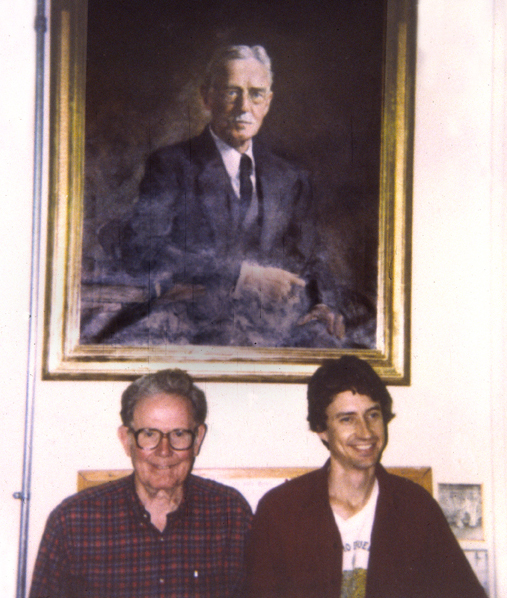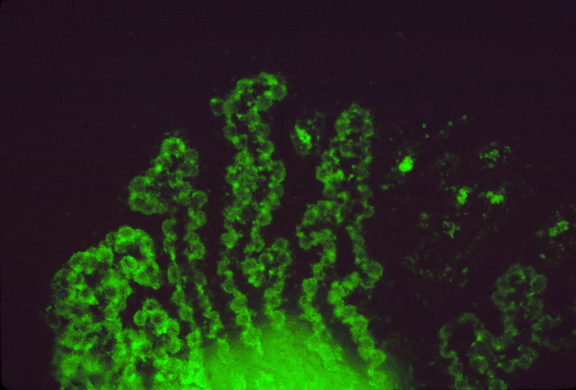Cell Sorting by Sponges
video of sponge cells rearranging

This photograph shows a painting of Wilson, with Nelson Hairston and Calhoun Bond in the foreground.
Dr. Hairston was Wilson's last graduate student, in the late 1930s, and became a very famous ecologist.
Cal Bond did his Ph.D. research in my laboratory, on sponges. The painting is in a conference room on the first floor of Wilson Hall, across the hall from the lecture room.

Oil painting of Albert Harris by his father Kenneth Harris,
painted about the time the future Professor was first
getting interested in Biology.
NOTE: Wilson did not believe that cells rearrange according to cell type; that idea was later proposed by Julian Huxley, based on his own observations of dissociated sponge cells.
Wilson believed that dissociated sponge cells switch from one differentiated state to another, depending on cell locations.
Does position control differentiation? (As Wilson argued against) (Cells at the surface of aggregates switch cell type to become skin, etc.) Or is re-positioning of cells controlled by which differentiated cell type they are? (Skin cells move from the interior back to the surface, re-forming skin.)
Later Wilson published papers arguing that sponges reform by differentiation of previously undifferentiated "archeocytes" (analogous to stem cells). (This is analogous to Columbus arguing that he had reached China, not discovered new continents.)
Wilson tried mixing dissociated cells from sponges of different species, trying to make super-sponges that might be economically useful. It didn't work. Cells of different sponge species separated from each other.
This is in contrast to what happens if you dissociate and mix cells from salamanders and frogs, or from birds and mammals. See notes on Cell Sorting, October 6th

A sponge that has ingested fluorescent beads

Sponges crawling on the wall of an aquarium, over the course of several days.
Lots more sponge pictures for anyone who needs more.
Bond, Calhoun, and Albert K. Harris (1988). Locomotion of sponges and its physical mechanism. J. Exp. Zool. 246: 271-284.
Bond, Calhoun (1992). Continuous cell movements rearrange anatomical structures in intact sponges. J. Exp. Zool. 263: 284-302.